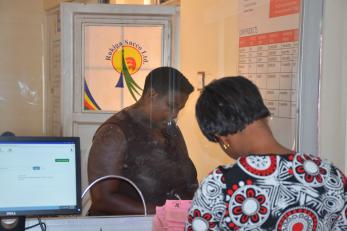Cold emailing still works—when done right. In today’s competitive job market, proactive outreach via email can open doors that traditional applications can’t. But with inboxes flooded and attention spans shrinking, how do you write cold emails that actually get responses? This guide walks you through what works, backed by expert advice, practical HR case studies, and recent industry trends.
Why Cold Emailing Still Matters
In a 2024 SHRM survey, 43% of HR professionals reported hiring at least one candidate who contacted them directly outside the advertised application process. Cold emailing isn’t dead—it’s just often misused.
Most job seekers get ignored because:
- Their emails are too generic
- They target the wrong people
- Their value isn’t clear
A personalized, research-driven email shows initiative—a trait many hiring managers value. “Proactive outreach signals curiosity and problem-solving, both critical in today’s fast-moving work environments,” notes Jennifer McClure, CEO of Unbridled Talent and a SHRM-recognized HR thought leader.
Lessons from the Field: Cold Emailing in Action
Case 1: Tech Graduate Breaks Into HR Tech
In 2023, a data analyst named Brian applied to over 100 jobs with no luck. He changed his strategy—identifying 10 HR tech firms he admired. He sent tailored cold emails to Heads of People or Talent at each.
In one message, he wrote:
“I noticed your team is implementing Workday. I recently worked on a similar implementation at my university project, and I’d love to contribute if there’s an opening or freelance need.”
Three replies. Two interviews. One job.
Why it worked:
- It referenced real value aligned with the company’s current need
- It showed familiarity with their tech stack
- It asked for any opportunity, not just a job
Crafting a Cold Email that Works
Cold emails that land jobs usually follow this structure:
1. Subject Line: Be Specific and Short
- ✅ “HR Analytics Enthusiast Interested in Your L&D Team”
- ❌ “Looking for Opportunities”
2. Salutation: Use Real Names
Avoid generic greetings. Use LinkedIn, company bios, or press releases to find the right contact and address them by name.
3. First Line: Personal Connection
- Mention a recent blog, product launch, company news, or even mutual contact
- Show you’ve done your research
“I read your recent Forbes interview about reshaping workplace culture with AI. I’m deeply interested in that transition.”
4. The Value Pitch
Explain how you can help. Focus on what the company needs, not your job title.
“I specialize in designing inclusive onboarding experiences. At my last internship, I helped reduce new hire attrition by 20%.”
5. Call to Action
Keep it low pressure:
- “Would you be open to a brief call to see if there’s a fit?”
- “Happy to send a quick one-pager on how I can help.”
6. Signature
Include LinkedIn, portfolio, or relevant attachments (no CV unless requested).
The Role of AI and Compliance in Cold Outreach
AI Tools Can Help, But Don’t Over-Automate
Tools like ChatGPT, Lavender, or Hunter.io can improve subject lines, find emails, and polish language—but recruiters can tell when emails are too polished or templated.
Be careful with tools that scrape contact info. In the EU and some U.S. states, data privacy laws like GDPR and CPRA may restrict unsolicited outreach, especially if it’s not job-related.
🔍 Fact check: According to a 2023 Harvard Business Review article, personalization increases email reply rates by 142%, but overuse of AI-generated templates decreases trust.
Cold Emailing Trends in the HR Industry
1. Talent Shortages Open More Doors
According to the 2024 LinkedIn Global Talent Trends Report, 87% of hiring managers say they’re open to unconventional outreach—especially in industries facing shortages like:
- Healthcare
- Logistics
- Green tech
- HR Tech & DEI
2. Recruiters Are Spending More Time on Passive Candidates
An internal SHRM study revealed that 46% of recruiters now allocate dedicated time to engage passive candidates—those not actively applying but expressing interest through platforms like email or LinkedIn.
“We love when candidates take initiative,” says Laurie Ruettimann, author and HR veteran. “A thoughtful message shows awareness of our work culture and values—something resumes don’t always convey.”
Mistakes That Kill Your Cold Email
Avoid these:
- Too Long: If it takes more than 30 seconds to read, most recruiters won’t finish.
- No Clear Ask: Don’t make them guess what you want.
- Too Much About You: Focus on the reader’s needs.
- Typos or Generic Lines: HR folks notice everything.
✅ Pro Tip: Run your email through Grammarly or Hemingway App before sending.
Email Template That Works
Here’s a fill-in-the-blank example for job seekers:
Subject: [Your Name] – Interested in [Team/Project Name]
Hi [Hiring Manager’s Name],
I came across your recent [LinkedIn post/article/team update] and was impressed by [specific point]. I’m a [your current role or area of focus], and I’d love to support [company name] in [specific way].
Recently, I [specific achievement or relevant experience]. I admire how your team is [acknowledge company mission or work], and I’d be excited to contribute.
Would you be open to a quick chat sometime this week? Happy to share more context or send a brief proposal if helpful.
Thanks for reading,
[Your Name]
[LinkedIn | Portfolio | Contact Info]
Real-World Follow-Up Etiquette
If you don’t get a response:
- Wait at least 5 business days
- Reply to the original email, not a fresh one
- Keep the follow-up shorter:
“Just following up in case my last note got buried. Still very interested in connecting!”
📌 Stat to know: Recruiterbox reports that 60% of hires come after the second email—not the first.
Internal Links to Deepen Your Strategy
- How to Write a Resume That Passes ATS
- Understanding What Recruiters Look for on LinkedIn
- HR Insights: What Hiring Managers Actually Think
Final Thoughts: Be Respectful, Be Strategic
Cold emailing isn’t about gaming the system—it’s about showing you care enough to do your homework. When tailored, timely, and respectful, cold emails reflect initiative and alignment—qualities employers crave.
As Forbes contributor Caroline Ceniza-Levine puts it:
“People hire people they know—or feel like they already do.”
By writing with clarity, showing value, and following up with care, your cold email won’t be cold for long.
Call to Action
Tried cold emailing before? What worked—and what didn’t? Share your experiences in the comments. And if you’re job hunting, subscribe to our newsletter for weekly HR insights that can boost your strategy.
Let me know if you’d like a downloadable checklist or want this adapted into a PDF resource for your site.
Title: How to Navigate Cold Emailing and Land Jobs
Meta Description (150 characters):
Learn how to write cold emails that get replies, with real HR insights, industry data, and expert quotes to guide your next job search move.
Cold emailing can feel awkward. You’re reaching out to someone you don’t know, hoping they’ll consider you for a job that may or may not exist. But here’s the truth: people still get hired this way. I’ve seen it happen firsthand—from entry-level applicants to senior professionals.
Let’s break down what actually works in cold outreach based on hiring experience, industry trends, and practical examples. This isn’t a sales pitch for automation tools or generic templates. It’s a guide built from real conversations, real results, and a clear understanding of how recruiters think.
Why Cold Emails Still Work: A Recruiter’s Perspective
In 2022, I helped a small agritech firm in Uganda hire a Learning and Development Officer. One of the top candidates wasn’t referred, didn’t apply through the job portal, and didn’t even meet all the listed requirements. She sent a cold email.
It was brief, personal, and based on the company’s actual work. She’d read our quarterly report and mentioned a pilot training module we were running in Soroti. She had experience supporting adult literacy programs in rural schools and suggested a few tools she’d used to boost learner engagement.
That email led to a phone call. The phone call turned into a contract. She’s still with the company.
Cold emailing works when it’s not about you—it’s about them.
What Makes a Cold Email Worth Reading
Most HR professionals don’t read past the first line unless something grabs them. The best cold emails focus on:
- Personal connection
- Clear intent
- Relevant value
Subject lines that actually get opened:
- “HR graduate curious about your onboarding program”
- “Read your SHRM feature—loved your thoughts on employee retention”
- “Ugandan payroll specialist exploring contract roles”
Avoid clickbait or overly clever lines. Recruiters don’t have time to decode riddles.
Body of the email:
- Mention something timely or specific to their company
- Offer a relevant skill or insight
- Ask for a call, reply, or next step—not a job directly
AI and Hiring: Why Personal Still Wins
AI tools like ChatGPT and Jasper can help polish your message, but recruiters spot copy-paste jobs instantly. In a 2024 article from Harvard Business Review, recruiters said templated outreach has made them more selective about replies.
Using AI is fine—but personalize it. Know the person’s name. Mention something they said, did, or built. That detail shows you care more than just getting hired—you want to contribute.
Case Study: From Cold Email to NGO Hire in 10 Days
One of my former colleagues at Mercy Corps received a message from a fresh graduate. The subject line? “Read your LinkedIn post on ethical recruiting—here’s a thought.”
The graduate shared a short story about an unethical interview experience, suggested a better process based on SHRM’s Interviewing Standards, and offered to volunteer for three months to help revamp the NGO’s onboarding guide.
That email earned a call. A week later, the HR director invited him for coffee. He joined the team on a three-month volunteer agreement and now holds a full-time People & Culture Associate role.
What HR Data Tells Us
Cold emails work best when they’re not random. According to the 2023 SHRM Talent Acquisition Report:
- 61% of recruiters responded to unsolicited emails if they showed role alignment
- Emails under 150 words got a 36% higher reply rate
- Personalization boosted responses by 45%
And a Forbes article from 2024 added that hiring managers are now more open to proactive job seekers, especially in roles that don’t have formal listings (think HR analytics, learning design, or DEI consulting).
Don’t Do This in Your Cold Email
- Don’t lead with a request. Warm up the conversation before asking for something.
- Don’t attach your CV right away. Wait until asked—unless it’s a direct referral.
- Don’t use buzzwords. Everyone’s a “results-driven team player”. Show real work instead.
- Don’t mass email. If you’re not tailoring your message, you’re wasting both your time and theirs.
What to Say Instead
Here’s a template that doesn’t feel robotic:
Subject: Community HR Intern interested in your refugee livelihood project
Hi [Name],
I came across your recent partnership with UNHCR on LinkedIn and found it fascinating. I’m currently working with a community HR team supporting displaced families in Moyo District.
We’ve been experimenting with a simple digital tool to track job placements—and uptake tripled in three months. If your team is open to it, I’d love to chat or share how we made it work.
No pressure—just keen to connect with someone building real impact through HR.
Warm regards,
[Your Name]
[LinkedIn | Email | Optional blog/portfolio]
Follow-Up That Doesn’t Feel Pushy
Send one follow-up email after 5–7 days. Keep it lighter than the first.
Example:
Just checking if my last message reached you. Totally understand if you’re busy—still very interested in connecting if the timing feels right.
Recruiters don’t mind follow-ups. What they dislike is nagging.
Cold Emailing Across Borders: What to Watch Out For
If you’re applying internationally, pay attention to laws around unsolicited outreach. The General Data Protection Regulation (GDPR) in the EU requires a lawful basis for contacting someone, even by email.
Cold emailing isn’t illegal, but if it feels like spam or sales, it can get flagged. Stick to genuine intent and professional tone. You’re not pushing a product—you’re starting a conversation.
What HR Experts Say
Liz Ryan, founder of Human Workplace and former Fortune 500 HR leader, says:
“The smartest job seekers are not applying for jobs—they’re identifying employers they admire and reaching out to the human beings inside.”
Paul Wolfe, former SVP of HR at Indeed, shared with HBR in 2023:
“We get hundreds of applications. But the ones who send a thoughtful message, who clearly understand what we do—that always stands out.”
These aren’t just opinions—they match hiring trends across industries. According to a recent LinkedIn Talent Blog, 84% of recruiters say they’re more likely to engage with job seekers who show personalized interest in their company’s mission or culture.
Internal Links for Smarter Job Search
- How to Build a LinkedIn Profile That Attracts HR Teams
- Writing Job Descriptions HR Actually Reads
- Preparing for a Behavioral Interview with Confidence
Final Take
Cold emailing isn’t dead. It’s just evolved. The spray-and-pray model won’t get you anywhere. But if you care about the company, speak their language, and offer something useful, someone will reply.
The best thing you can do? Start small. Pick five companies you admire. Write one email a day. Track who responds, tweak your message, and keep going. You’re not selling yourself—you’re inviting someone into a real conversation.
And that’s what hiring is, at its core: people connecting with people


